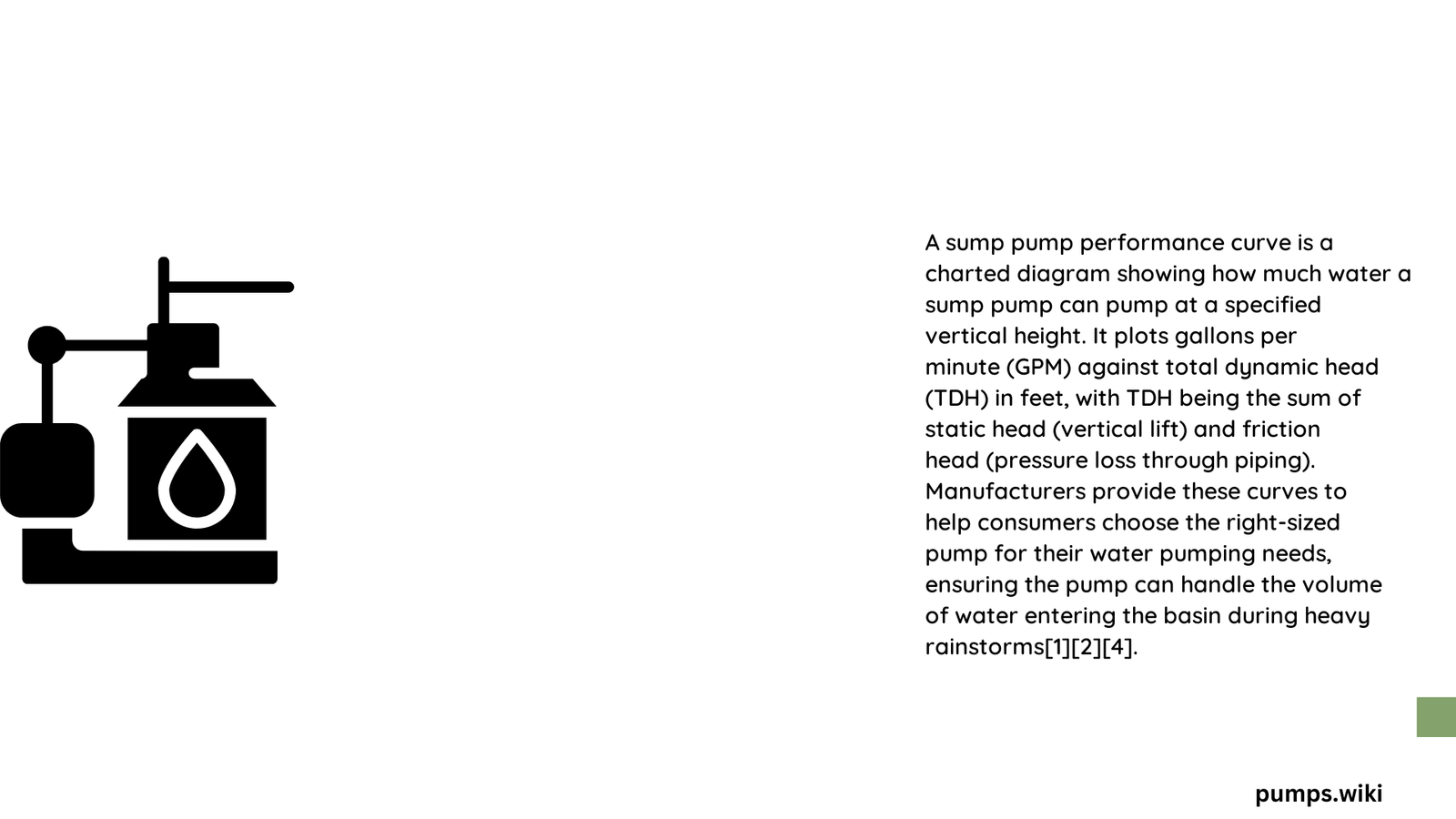A sump pump curve represents a graphical representation of a pump’s performance characteristics, illustrating the relationship between flow rate, head pressure, efficiency, and power consumption. This critical engineering tool enables professionals and homeowners to understand pump behavior, select appropriate equipment, and predict operational performance under varying conditions.
What Defines a Sump Pump Curve?
Understanding Basic Performance Parameters
A sump pump curve provides essential technical insights through multiple performance metrics:
- Flow Rate Representation
- Horizontal axis typically measures gallons per minute (gpm)
-
Indicates volume of water pump can move
-
Head Pressure Dynamics
- Vertical axis represents total dynamic head
- Measures energy transfer capabilities
- Demonstrates pump’s lifting potential
Key Performance Metrics Visualization
| Metric | Description | Measurement Unit |
|---|---|---|
| Flow Rate | Water volume movement | Gallons per minute |
| Total Head | Energy transfer capability | Feet or meters |
| Efficiency | Power conversion rate | Percentage |
| Power Consumption | Energy required | Kilowatts |
How Do Sump Pump Curves Indicate Performance?

Analyzing Curve Characteristics
Sump pump curves reveal critical operational insights through:
- Efficiency Curve: Shows maximum performance point
- Power Consumption Trajectory: Demonstrates energy requirements
- Head Pressure Relationship: Illustrates pressure-flow interactions
Mathematical Performance Calculations
Performance calculations involve complex engineering formulas:
Pump Efficiency (η) = (Power Delivered to Fluid) / (Input Power)
Total Head = (Discharge Pressure - Suction Pressure) / (Fluid Density × Gravity)
Why Are Sump Pump Curves Critical?
Technical Decision-Making Factors
Sump pump curves enable precise equipment selection by:
- Preventing system overload
- Matching pump capabilities with specific requirements
- Predicting potential operational challenges
- Estimating long-term performance reliability
What Influences Sump Pump Curve Performance?
External and Internal Factors
Critical performance influencers include:
- Impeller diameter
- Fluid characteristics
- System resistance
- Installation configuration
- Operational temperature
- Maintenance condition
How to Interpret Sump Pump Curves Effectively?
Professional Analysis Techniques
Successful curve interpretation requires:
- Understanding manufacturer specifications
- Comparing system requirements
- Identifying best efficiency point (BEP)
- Recognizing potential cavitation risks
Practical Recommendations
Optimal Sump Pump Selection Strategy
- Match curve characteristics with specific application
- Consider long-term operational efficiency
- Evaluate total system requirements
- Consult professional hydraulic engineers
Technical Limitations and Considerations
Performance Boundary Conditions
- Avoid operating beyond recommended flow rates
- Maintain minimum required net positive suction head
- Monitor potential cavitation risks
- Implement regular performance assessments
Advanced Performance Optimization
Engineering Enhancement Strategies
- Implement variable speed drives
- Use advanced monitoring technologies
- Conduct periodic performance audits
- Consider impeller trimming techniques
Conclusion
Sump pump curves represent sophisticated engineering tools enabling precise performance prediction and equipment selection. Comprehensive understanding requires technical expertise and systematic analysis.
